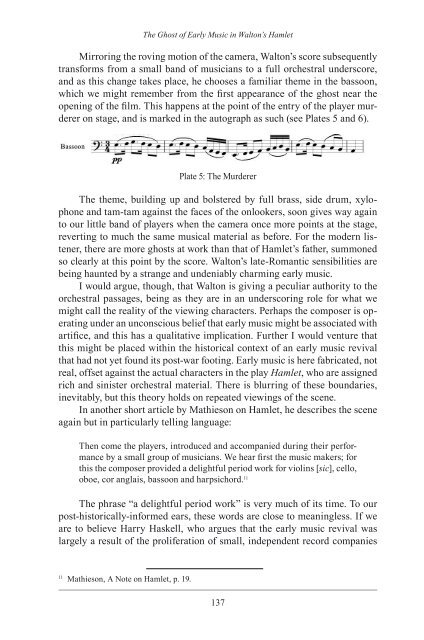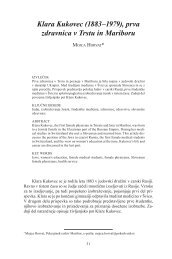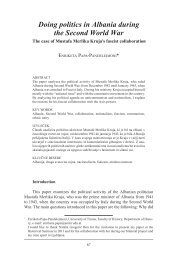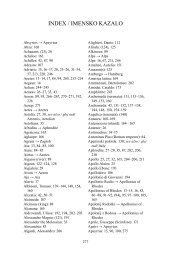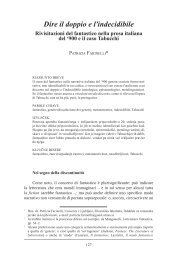HS 9 - HistoriÄni seminar ZRC SAZU
HS 9 - HistoriÄni seminar ZRC SAZU
HS 9 - HistoriÄni seminar ZRC SAZU
You also want an ePaper? Increase the reach of your titles
YUMPU automatically turns print PDFs into web optimized ePapers that Google loves.
The Ghost of Early Music in Walton’s Hamlet<br />
Mirroring the roving motion of the camera, Walton’s score subsequently<br />
transforms from a small band of musicians to a full orchestral underscore,<br />
and as this change takes place, he chooses a familiar theme in the bassoon,<br />
which we might remember from the first appearance of the ghost near the<br />
opening of the film. This happens at the point of the entry of the player murderer<br />
on stage, and is marked in the autograph as such (see Plates 5 and 6).<br />
Plate 5: The Murderer<br />
The theme, building up and bolstered by full brass, side drum, xylophone<br />
and tam-tam against the faces of the onlookers, soon gives way again<br />
to our little band of players when the camera once more points at the stage,<br />
reverting to much the same musical material as before. For the modern listener,<br />
there are more ghosts at work than that of Hamlet’s father, summoned<br />
so clearly at this point by the score. Walton’s late-Romantic sensibilities are<br />
being haunted by a strange and undeniably charming early music.<br />
I would argue, though, that Walton is giving a peculiar authority to the<br />
orchestral passages, being as they are in an underscoring role for what we<br />
might call the reality of the viewing characters. Perhaps the composer is operating<br />
under an unconscious belief that early music might be associated with<br />
artifice, and this has a qualitative implication. Further I would venture that<br />
this might be placed within the historical context of an early music revival<br />
that had not yet found its post-war footing. Early music is here fabricated, not<br />
real, offset against the actual characters in the play Hamlet, who are assigned<br />
rich and sinister orchestral material. There is blurring of these boundaries,<br />
inevitably, but this theory holds on repeated viewings of the scene.<br />
In another short article by Mathieson on Hamlet, he describes the scene<br />
again but in particularly telling language:<br />
Then come the players, introduced and accompanied during their performance<br />
by a small group of musicians. We hear first the music makers; for<br />
this the composer provided a delightful period work for violins [sic], cello,<br />
oboe, cor anglais, bassoon and harpsichord. 11<br />
The phrase “a delightful period work” is very much of its time. To our<br />
post-historically-informed ears, these words are close to meaningless. If we<br />
are to believe Harry Haskell, who argues that the early music revival was<br />
largely a result of the proliferation of small, independent record companies<br />
11<br />
Mathieson, A Note on Hamlet, p. 19.<br />
137


